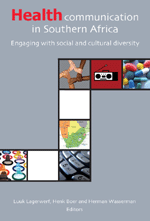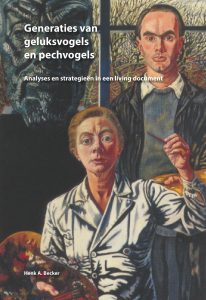- by: Ros Dowse, Rhodes University
 Part 3: Patient Information
Part 3: Patient Information
Abstract
The objectives were to design a simple, illustrated patient information leaflet for the antiretroviral regimen of stavudine, lamivudine and efavirenz and to evaluate its readability and acceptability in the local Xhosa population. In order to achieve this, a further objective was to design and evaluate illustrations to include in the patient information leaflet which were culturally acceptable and well interpreted. Illustrations or pictograms were designed to illustrate selected instructions appearing in the patient information leaflet and were individually tested in 30 Xhosa participants who had a maximum of 8 years of formal schooling. Results were used to improve the pictograms for inclusion in the patient information leaflet. The patient information leaflet was designed and tested in sixty Xhosa participants with varied levels of education who had stated they could read. Demographic data were collected and they were then asked to read the patient information leaflet, available in both English and isiXhosa, and a series of questions was asked to assess its comprehension and acceptability. The overall average rate o f understanding was 95. Six of the 20 questions were located and understood by all participants, and only two questions resulted in less than an 85 correct response. Physical appearance and quantity of information were highly rated and all participants were enthusiastic about the inclusion of pictograms.
Introduction
The communication of health-related information in Africa has involved various media including theatre (Mbizvo, 2006), video (Mathews, 2002), television and radio (Health Communication Partnership, 2008) and folk media which includes poems, dance drama, story-telling, rhymes and sayings (Gokah, 2007). However, the most commonly employed method has been the use of print media (Peltzer, 2002). Low literacy rates coupled with inadequate infrastructure and poor technological development in African countries have favoured the use of posters, billboards and pamphlets for health promotion and patient education.
Medicine-taking behaviour is complex, multi-factorial, and depends on a dynamic interaction of several factors, including cognitive, behavioural, social, environmental and physiologic factors (WHO, 2003). A minimum requirement for using medicines safely and effectively is a basic understanding of the medicine instructions and the ability to recall this information. However, the communication of this information to the average patient in southern Africa presents a complex challenge to health professionals as poorly resourced health care systems result in minimal time spent with individual patients and the cultural, educational, socioeconomic and linguistic differences that often exist between health professionals and patients may further challenge successful communication. Limited reading skills, a poor knowledge of the body and its systems and inadequate insight into diseases and their treatment also disadvantage patients seeking to address their health problems. Read more



- by: Mia Malan, Stellenbosch University
 Abstract
Abstract
The ways in which journalists frame HIV stories can strongly contribute towards news consumers’ perceptions of the epidemic. This paper discusses the news values of HIV radio programmes in Ethiopia, Kenya and South Africa. It argues that the culturally appropriate ‘humanisation’ of HIV stories and the proper use of conflict as adding news value are paramount to the impact of stories. The skillful application of news values can make almost any HIV-related story newsworthy and therefore part of mainstream news. Moreover, it is maintained that HIV advocacy environments contribute to the newsworthiness of HIV stories in the media. The AIDS advocacy milieus of South Africa and Kenya are compared and related to the type of HIV stories that are published and broadcast in the respective countries. Journalism training methods are critically discussed in the context of the above. It is argued, that, in developing countries, where journalists often lack basic journalism skills, it is not sufficient to provide reporters with HIV-related information; HIV information sharing should be combined with general journalism training and mentoring.
Introduction
In December 2007, an excited Bashir Osman – a Somaligna-speaking journalist from Dire Dawa in the east of Ethiopia – broadcast a live call-in show on breastfeeding and HIV to his Somali audience on Dire 106.1 FM. According to the most recent Ethiopian government figures, Dire Dawa has the second highest HIV prevalence rate in the country, and almost doubles the national average. Each year there are almost 1, 000 HIV positive pregnancies with at least 230 children born with the virus. Yet this was the first HIV programme that Bashir had ever produced.
AIDS was so stigmatised in the region that Dire 106.1 FM hardly ever discussed it on air. And Osman had no problem following this route. A week before the
broadcast, the journalist – like most of his listeners – refused to be in the same room as people with HIV because he “didn’t want to risk breathing the same air” (Osman cited in De Masi, 2008) as them. He would never consider sharing a plate, or hosting an HIV positive person in his home, and thought it a deep insult to be tested for the virus.
But then Osman accessed what turned out to be a precious piece of culturally relevant information: he learned that babies of HIV positive women can get infected with the virus through their mothers’ breast milk (personal communication, December 6, 2007). All mothers with babies in his community breastfed their infants … including his very own wife. His own five-month old baby could be at risk, he perceived with shock, because neither he nor his wife knew their HIV status. The realisation changed Osman’s entire view on AIDS, and HIV was suddenly a virus that had the potential to directly impact his own life and those of everyone else he knew, in ways he had previously vehemently denied (personal communication, December 6, 2007). In short, this piece of information made AIDS newsworthy to Osman, his community and his editors. It became something that was crucial and worthwhile to talk about. Read more
- by: Emma Durden, University of Cape Town and University of KwaZulu-Natal
 Abstract
Abstract
This paper explores two essential questions related to health promotion and HIV/AIDS education.
1: Do HIV positive health promoters and peer educators have positive effects on students’ health attitudes, behaviours and HIV stigma reduction?
2: Which programme characteristics have better effects on health education performance? The paper seeks to address these questions with relation to the DramAidE Health Promoters Project run at a number of Higher Education Institutions in South Africa. The project makes use of HIV positive young people to live openly as role models with HIV on campus, to break stigma around the disease, increase prevention efforts, and encourage testing for HIV and positive living with HIV. A project evaluation conducted in 2007 included interviewing students, staff and the HIV positive health promoters working at nine campuses across South Africa, and forms the basis for this study.
Introduction
This chapter introduces the DramAidE Health Promoters Project and gives some background on its history and the rationale for its inception, with an overview of the current situation and response to HIV/AIDS at Higher Education Institutions in South Africa. The Health Promoter Project is rooted in the fields of peer education and entertainment education, and this chapter explores some of the theories that inform those practices, as well as an overview of some of the literature on similar projects that employ HIV positive people.
The chapter then explores two areas of study, namely the effect that HIV positive peer educators have on other students, and the programme characteristics that have better effects on health education performance; in an attempt to highlight good practice in the field of health promotion and HIV prevention efforts in South Africa. Some of the data relevant to the DramAidE Health Promoters Project are presented and discussed, with conclusions regarding the successes, challenges and potential of this strategy.
The DramAidE Health Promoters Project
The social impact of the HIV/AIDS epidemic in South Africa highlights the need to ensure that communities band together to deal with all aspects of the disease. Social behaviour change theories suggest that it is most effective to educate, sensitise and mobilise individuals by addressing the community in which these individuals find themselves, and to make HIV/AIDS a community concern (UNAIDS, 1999b). A number of commentators on HIV/AIDS behaviour change interventions agree that behaviour change can only happen in a supportive context where individuals are empowered to act within the group (Tomaselli, 1997; Airhihenbuwa & Obregon, 2000; Papa et al, 2000; Kelly, Parker & Lewis, 2001; Tufte, 2002).
The Health Promoters Project is a project running in Higher Education Institutions across South Africa, where these institutions are seen as able to respond to HIV/AIDS in a strategic and focused manner, as communities that find themselves within other broader communities. It is understood that the Higher Education sub-sector in South Africa may be disproportionately more affected by HIV/AIDS than other sectors, as the majority of students found on campuses across the country are in the in the age group with the highest prevalence of HIV infection (SAUVCA, 2006). According to a 2000 study conducted by the research organisation Abt Associates, the rate of HIV infection at a university undergraduate level was estimated to be roughly 22. This was expected to rise to 33 by 2005 (Thom & Cullinan, 2003). Read more
- by: Tanja E. Bosch - University of Cape Town
 Abstract
Abstract
There is widespread global use of technology in medicine and health communication, leading to terms such as telemedicine, telehealth and e-health. A wide range of information and communication technologies (ICTs) is used both in the provision of services, as well as for messaging and communication campaigns. In South Africa, limited Internet penetration has led to increased experimentation with cell phones as a tool for social change. This paper provides a discussion of three of such projects: The Teen SMS Helpline of the South African Depression and Anxiety Group (SADAG); SIMPill which assists patients with compliance to their tuberculosis medication; and CellLife’s Cell phones for HIV programme. The projects are described, and the paper reflects on the general possibilities for using cell phones in healthcare, weighing advantages and disadvantages, particularly in the local South African context.
Introduction
The global trend of using new technologies in healthcare and health communication has made its way to Africa. A range of healthcare initiatives makes use of palm devices, the Internet, and other information and communication technologies, giving rise to the terms e-health, tele-health, and telemedicine (see Oh, Rizo, Enkin & Jada, 2005, for a literature review on the topic).
While the growing body of literature on this subject explores both the Internet and cell phones as ‘new’ media in the use of health promotion efforts, it is cell phones that are emerging as most popular, and possibly most effective, in health communication on the continent. Internet penetration in South Africa is increasing steadily, but the numbers of people with access to high-speed Internet connectivity here and elsewhere across Africa are probably still too low to allow the widespread success of Internet based applications, outside of telecentres set up specifically for this purpose. Recent statistics indicate that only one in 700 Africans has access to the Internet, versus one in four Europeans (Chakraborty, 2008).
On the other hand, the number of mobile subscribers in Africa has increased dramatically over the last few years. In 2007 Africa added over 60 million new
mobile subscribers and mobile phones represented 90 percent of all telephone subscribers (African Telecommunication/ICT Indicators, 2008). Indeed, cellphone penetration in Africa has increased rapidly since the privatisation of telephone monopolies in the mid-1990s (LaFraniere, 2005). Between 2000 and 2006, the total number of subscribers to cellphone services increased from 10 million to 110 million, in the 24 countries of sub-Saharan Africa, and South Africa had more subscribers to cell phones than fixed lines (Buys, Dasgupta, Thomas & Wheeler, 2008). Similarly, an earlier study revealed that the number of mobile subscribers in 30 Sub-Saharan countries rose from zero in 1994 to more than 82 million in late 2004 and the rate of growth for the entire continent has been more than 58 per year (Mbarika & Mbarika, 2006). Clearly, Sub-Saharan Africa is the world’s fastestgrowing wireless market and the rate of growth for the entire continent has been more than 58 per year (Mbarika & Mbarika, 2006). In South Africa, cellphone use is widespread, particular with the introduction of pre-paid services; and there are over 30 million users (Shackleton, 2007). Read more



- by: C.J. Polychroniou & Marcus Rolle

Malcolm Sawyer ~ Emeritus Professor of Economics. Leeds University Business School
More than a year ago, British voters sent waves of shock throughout Europe and the world economy with their decision to withdraw from the European Union (EU). However, the impact of Brexit on the UK’s economy and its implications for the future of the EU remain contested territory, especially since the conservative government of Theresa May has shown astonishing ineptness so far in terms of the conditions of the divorce. In this interview, well-known British economist Malcolm Sawyer of the University of Leeds provides an insightful analysis on the major issues and questions associated with Brexit, shedding light on what the future may hold for both the UK and the EU.
C.J. Polychroniou and Marcus Rolle: Britain’s decision last year to leave the European Union represents a shattering political development, the effects of which remain incalculable both for the future of the United Kingdom and for the EU itself. But before we explore the political economy of Brexit, let’s start by asking you to explain to us what you believe were the key factors that prompted British voters to seek a divorce from the European Union.
Malcolm Sawyer: The result of the referendum vote of June 2016 was close — 52 percent [voted] “leave EU” and 48 percent [voted] to remain. In any referendum (and indeed other elections), it is difficult [if not] impossible to discern what people thought they were voting for or against. In this referendum, whilst the consequences of a “remain” majority could be perceived as continuation with present arrangements, those of a “leave” majority were obscure — and indeed, the UK government is now grappling with working out what the consequences will be.
For those who voted for the UK to leave, my impressions are that the key factors include:
– The appeal of “take back control,” particularly with regard to immigration and the free movement of labor within the EU. Whilst there appear to be net economic benefits for the UK from immigration, there will be winners and losers, and people’s perceptions may often be of little or no benefits: added to which, hostility towards foreigners.
– The remoteness of the EU, often labelled in terms of “Brussels” with connotations that decisions of the EU were being imposed on the UK without input from the UK. This interacted with the “take back control” and could be stoked up by stories (often false) of decisions made by the EU.
– Disbelief that the UK’s membership of the EU brought economic benefits. The UK’s contribution to the EU budget (a net cost of around ½ percent of GDP) was apparent (though much overstated by the leave campaign), and the benefits for enhanced trade and cooperation much more nebulous. The remain campaign would cite 3 million jobs dependent on trade with EU (again overstated), but that would mean 27 million jobs were not dependent on such trade.
A breakdown of the vote revealed two fractures: a sharp division between young and old, and a huge gap between London and the North. What does the political economy have to do with these two fractures, and what sort of economic policies can be implemented in the future that can heal a divided nation?
The voting patterns with regard to remain/leave can be broken down along a number of lines — a tendency for large cities to vote remain (not just London), two countries voted to remain (Scotland, Northern Ireland) and two to leave (England, Wales). Having a university education tended to be associated with voting “remain,” and the old were much more likely than the young to vote leave (there being overlap between the two in that participation in higher education was much lower in the 1950s and 1960s than in the past two decades).
There appears to be association between socially conservative attitudes and voting leave. Areas of industrial decline appeared more likely to vote leave, [as did] areas where immigration had increased substantially in the past decade (noting that migration from other EU countries rose sharply after 2004 with the entry of the new member states in that year).
There is, in my view, a division between remain voters and leave voters running along the lines of “what matters to them.” A potent slogan of the leave campaign was “taking back control” — applied to immigration (as the free movement of labor places few constraints on migration within the EU), and to the role of [the] European Court of Justice, and more generally, to adoption of laws (though the impact of EU legislation on UK legislation was often grossly overstated by leave campaign), and to some degree, over regulations associated with the single market, and over policies, such as the common fishery policy.
The remain campaign focused on the adverse economic consequences of the UK leaving the EU, and failed to address the issues raised by the leave campaign in connection with “take back control.” Although large numbers were bandied about for the economic losses associated with leave, in proportional terms, the losses were relatively small (less than 5 percent of GDP over a 15-year period, and then as compared with what would have otherwise occurred). If a person’s concern is over perception of a loss of control, and striving to take “back control,” then some economic loss may well appear inconsequential. But also, the leave campaign’s slogan to the effect that £350 million a week (equivalent to around 1 percent of UK GDP) was the cost to the UK of EU’s membership, money which could be spent on the NHS, served as an antidote to the remain campaign’s claims over economic damage from leaving the EU. The £350 million per week claim was much derided as inaccurate, representing the gross payments by UK to the EU and ignoring the money flowing back to the UK for the agricultural support policy, regional and structural funds, and research moneys to universities.
Read more




Generaties en hun kansen en bedreigingen
Inhoud
1. Twee abstractieniveaus omtrent het patroon van generaties.
2. Generatie Z, of de ICT-Generatie.
3. De Robotgeneratie.
4. Generatiepatroon en maatschappelijk debat
5. Tenslotte
– Dit bonushoofdstuk voorziet het boek van de derde, herziene editie
Twee abstractieniveaus omtrent het patroon van generaties.
Het woord ‘generatie’ komen wij vrijwel dagelijks tegen. Het heeft betrekking op ‘categorieën van leeftijdsgenoten’. Generaties van vroeger, generaties van tegenwoordig, generaties in de toekomst. Soms gaat het om generaties in de samenleving als geheel, soms om onderdelen van de samenleving. Generaties in een politieke partij, generaties in een stad, generaties in een familie.
In deze gevallen gaat het om een of meer generaties op een hoog abstractieniveau. Daarnaast komen wij de term tegen op een laag abstractieniveau. Denk aan generaties in statistische overzichten van sets van cohorten in het onderwijs, op de arbeidsmarkt, in het onderwijs.
Meestal vertonen generaties die op een laag abstractieniveau worden aangetroffen heel wat onvoorspelbaarheden. Zij vertonen een sterke mate van ‘systeemruis’. De Chaostheorie bepleit om in een dergelijk geval gebruik te maken van idealisaties. Welke aanpak vindt dan toepassing? ‘Een deel van de werkelijkheid wordt geïsoleerd, irrelevante aspecten worden terzijde gelaten, invloeden van buitenaf worden verwaarloosd. Zonder dergelijke idealisaties zijn de natuurwetenschappen onmogelijk’.[i] Ook de maatschappijwetenschappen zijn zonder dergelijke idealisaties onmogelijk.
Idealisaties liggen op een hoog niveau van abstractie. Overzichten van sets van cohorten liggen op een laag niveau van abstractie. Komen generaties op een laag niveau van abstractie ter sprake, dan kunnen nuanceringen in de omschrijving worden aangebracht. De grens tussen twee generaties kan in dit geval verschillen. Een generatie kan voorlopers vertonen. Kortom de beschrijving kan tal van nuances vertonen.
In Generaties van Pechvogels en Geluksvogels is deze tweedeling reeds aan te treffen. Zo staat in het boek ‘typologiegeneratie’ voor ‘generatie op een hoog abstractieniveau’.
[i] Henk Broer, Jan van de Craats en Ferdinant Verhulst. Chaostheorie, het einde van de voorspelbaarheid? Utrecht 1995. Read more





